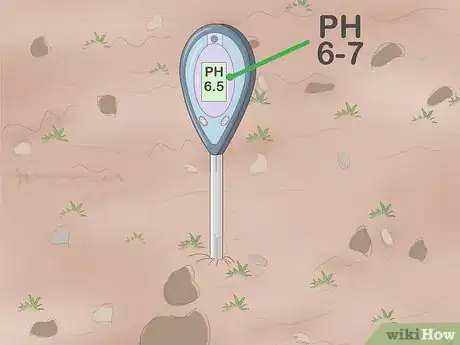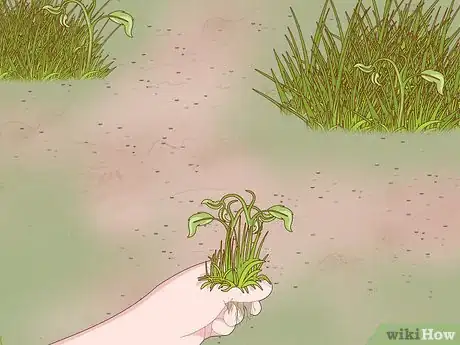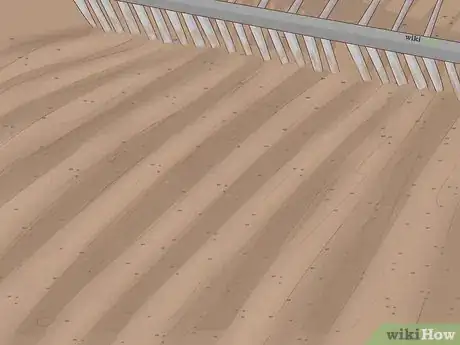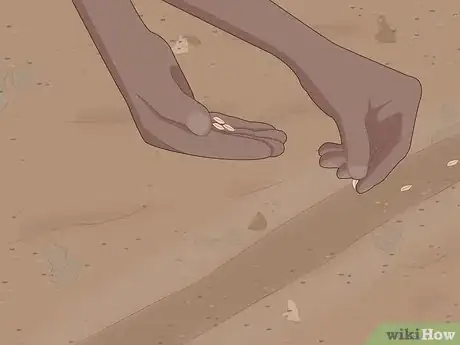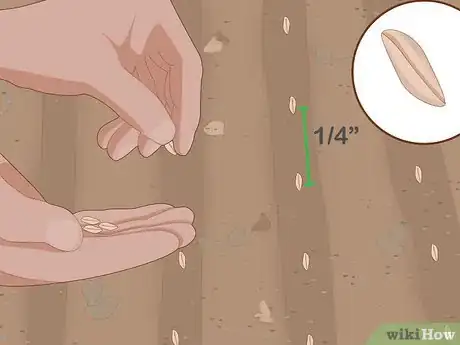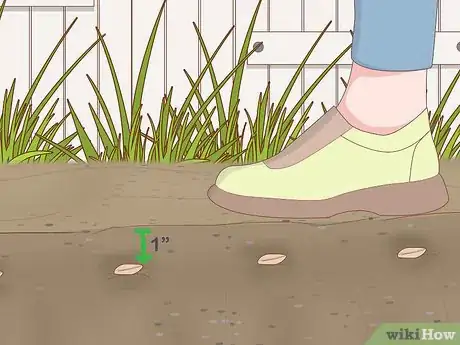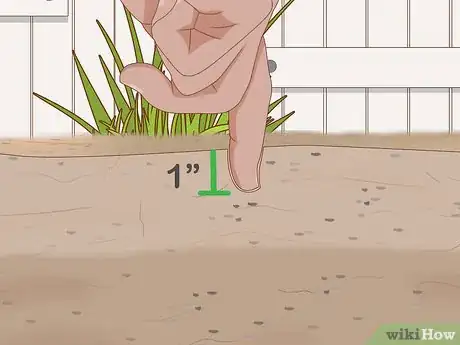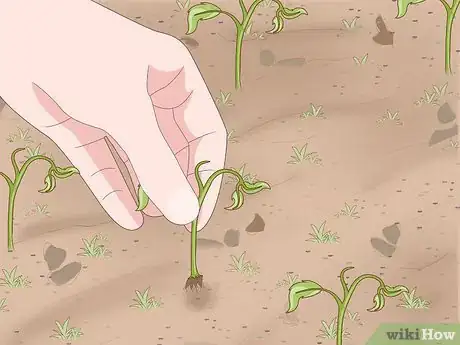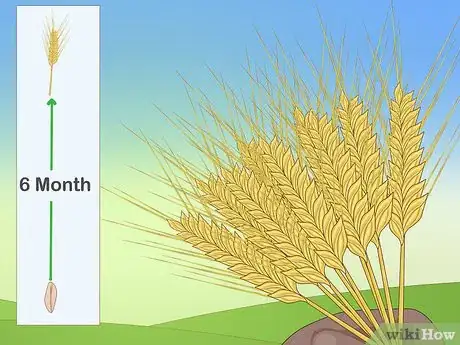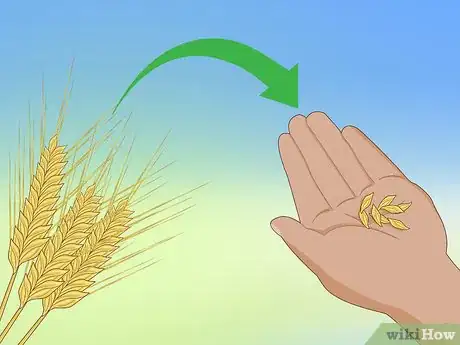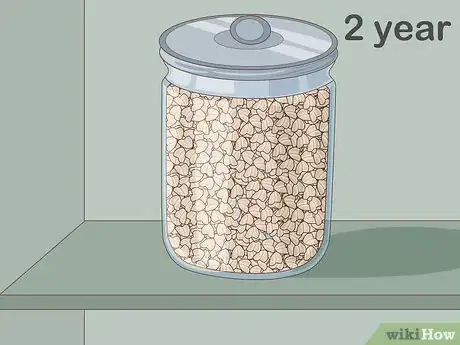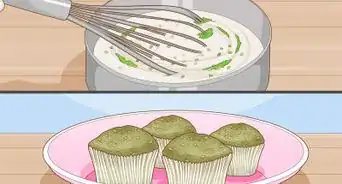This article was co-authored by Lauren Kurtz. Lauren Kurtz is a Naturalist and Horticultural Specialist. Lauren has worked for Aurora, Colorado managing the Water-Wise Garden at Aurora Municipal Center for the Water Conservation Department. She earned a BA in Environmental and Sustainability Studies from Western Michigan University in 2014.
wikiHow marks an article as reader-approved once it receives enough positive feedback. In this case, 85% of readers who voted found the article helpful, earning it our reader-approved status.
This article has been viewed 100,198 times.
Want your morning bowl of warm oatmeal to taste better than the boxed stuff? Thinking of growing your own animal feed for the farm? You might be interested in growing oats. While oats do need proper care to thrive, they are one of the easiest grains to grow. They also happen to be nutrient rich and very healthy for you. In this article, we’ll cover everything you need to know about growing your own oats.
Steps
Choosing and Preparing a Planting Location
-
1Choose a location with a pH between 6 and 7. As with many plants, oats flourish in soil that has a pH that falls within this range. To start off on the right foot, test the soil with a commercial pH probe or a pH test strip in the area where you plan to plant your oat seeds. If the pH doesn’t fall between 6 and 7, try a different location or adjust the pH.
- You can raise the pH by adding limestone to the soil.
- You can lower the pH by adding a fertilizer that contains ammonium sulfate, ammonium nitrate, or urea to the soil.[1]
-
2Remove all weeds from the area where you’ll be planting oats. Oats have a difficult time growing properly and thriving if they’re grown in a weed-infested environment. Before planting your oat seeds, use a weeding tool to loosen the soil around the weeds in the area and then pull the weeds out of the ground one by one.[2]
- Some weeding tools that you can use include a Japanese Farmer’s Knife or a Cape Cod Weeder.
Advertisement -
3Till the soil. Once the soil is free of weeds, use a tiller or cultivator to break up the soil and prepare it for planting the oat seeds. Refer to the manufacturer's instructions and push the tiller in parallel lines across the entire area that you plan to use for planting. When you’re done, push the tiller in lines that are perpendicular to the others.[3]
- If you don’t have a tiller, you can rent one from a home improvement store or from a lawn and garden equipment rental store or website.
Planting and Caring for the Oats
-
1Plant the seeds during spring or fall. When you plant your seeds depends on what you plan to use the oats for. If you're growing oats for food, plant them in the spring so you have a summer harvest. If you're growing oats for ground cover, plant your seeds in the early spring for green manure and plant them in the fall if you’re hoping to get a winter-killed ground cover.[4]
-
2Lay the oat seeds 1⁄4 inch (0.64 cm) apart in rows. It’s best to plant your seeds in evenly spaced rows. Within the row, drop a seed onto the top of the soil every 1⁄4 inch (0.64 cm). Continue doing this until you’ve filled the planting area completely.
-
3Walk over each row to push the seeds down. After you’ve dropped all of your oat seeds onto the soil, rake over the soil to smooth it out. The seeds need to be planted less than 1 inch (2.5 cm) below the surface, and walking across them should allow this to happen.
- If your soil has a high clay content, avoid walking over it so it doesn't get too compacted.
- Don't walk over your soil when it's wet.
- If your soil is wet or easily compacted, you can lay a wooden board over it and walk across the board instead of walking directly on the soil.
-
4Keep the soil continuously moist. Stick your fingers about 1 inch (2.5 cm) or so into the soil as often as possible to make sure that it doesn’t feel dry. When it does feel dry, water the oats to encourage them to thrive.
-
5Weed the area once your oats start growing. Although weeding the area before you plant the oat seeds is beneficial and necessary, you’ll need to continue doing it if you want your oats to thrive. When you water your oats, check for weeds and remove any that have popped up.
Harvesting the Oats
-
1Harvest once the seed heads are dry. As you watch the oats grow and develop seed heads, gently touch a few of them to see if they’re damp or dry. Once, they’re dry to the touch, it’s time to harvest the oats.
- It typically takes about 6 months from the time the seeds are planted until the oats are ready to be harvested.
-
2Cut off the oat seed heads and separate the grains from the stalks. Cut the seed heads off of the rest of the plant with garden shears or simply snap them off with your hands. Put the seed heads into a bucket and shake it to crack open the seed heads. Then, pull out the grains by hand.
- You can separate out the grains in a number of other ways, including putting them in a pillowcase and beating them against a wall.
-
3Store oats in a cool, dry area. Keep your grains in an airtight container and then place the container somewhere in your home that is relatively cold and dry for as long as 3 months. You can also freeze them for up to 2 years if you prefer a long term storage option.
- If you have farm animals, you can put the discarded stalks in your barn stalls and use them for bedding.[5]
Community Q&A
-
QuestionWhat is the crop yield of oats?
 NinoxTop AnswererOat usually produce 300 g per square meter (9 oz per square yard), but it depends on the variety and the growth conditions.
NinoxTop AnswererOat usually produce 300 g per square meter (9 oz per square yard), but it depends on the variety and the growth conditions. -
QuestionWhere can I get oat seeds?
 Community AnswerYou could order them online or buy them from your local garden store.
Community AnswerYou could order them online or buy them from your local garden store. -
QuestionCan you grow them from packaged oatmeal bought at a store?
 Community AnswerNo, this won't work as most of the oats will have the husk removed by machine. It might work if they still have the husk, so you could try to sprout a few test oats before planting the whole packet but don't be surprised if this fails to work.
Community AnswerNo, this won't work as most of the oats will have the husk removed by machine. It might work if they still have the husk, so you could try to sprout a few test oats before planting the whole packet but don't be surprised if this fails to work.
Things You'll Need
- Commercial probe or pH testing strips
- Weeding tools
- Tiller or cultivator
- Garden shears (optional)
- Bucket or pillowcase
- Airtight container
References
- ↑ http://vric.ucdavis.edu/pdf/Soil/ChangingpHinSoil.pdf
- ↑ http://covercrops.cals.cornell.edu/oats.php
- ↑ https://www.lowes.com/projects/gardening-and-outdoor/till-and-cultivate-your-garden/project
- ↑ http://covercrops.cals.cornell.edu/oats.php
- ↑ https://www.youtube.com/watch?v=Ox6znvFiFvw&feature=youtu.be&t=2m27s
About This Article
The best way to grow oats is to find an area where the soil has a pH between 6 and 7. In early spring or fall, weed and till the planting area. Then, lay the oat seeds 1/4 inches apart in rows. Rake soil over the seeds and keep the soil moist. Pull any weeds that pop up as the oats grow. To learn about harvesting your oats, scroll down!
